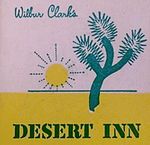Wynn Las Vegas, often simply referred to as Wynn, is a luxury resort and casino located on the Las Vegas Strip in Paradise, Nevada, United States. It is owned and operated by Wynn Resorts, and was built on the former site of the Desert Inn resort, which opened in 1950. Casino developer Steve Wynn purchased and closed the Desert Inn during 2000, with plans to build a new resort on the site. The design phase lasted two and a half years, and construction began on October 31, 2002, with Marnell Corrao Associates as general contractor. At a cost of $2.7 billion, Wynn Las Vegas was the most expensive resort ever built, beating out Wynn's $1.6 billion Bellagio, which opened on the Strip in 1998.
Wynn Las Vegas opened on April 28, 2005, with 2,716 rooms and a 111,000 sq ft (10,300 m2) casino. At the time, its 45-story hotel tower was the tallest building in Nevada. A sister property, Encore Las Vegas, was opened by Wynn Resorts in December 2008. Located directly north of the resort, Encore added a second hotel tower and additional gaming space, as well as several restaurants and clubs. In total, the 215-acre (87 ha) Wynn complex contains 4,748 rooms and 188,786 sq ft (17,538.8 m2) of gaming space. Wynn declared his $5.2 billion complex finished in May 2010, following additions made at Encore.
Unlike most Strip resorts, the Wynn does not feature a theme. In a break from Wynn's previous resorts, it also lacks a free attraction for pedestrians. Instead, an artificial mountain obscures most of the attractions, meant to evoke curiosity and lure people into the resort. A 3-acre (1.2 ha) lake is surrounded by the mountain and several restaurants, and is the site of a show called Lake of Dreams, which features singing animatronics.
The Desert Inn's golf course was kept and redesigned to become the Wynn's course. Upon opening, the resort also included the state's only Ferrari and Maserati dealership, which later closed in 2015. The property has two retail areas, Wynn Esplanade and Wynn Plaza, the latter replacing the dealership in 2018. Tryst, a popular nightclub by Victor Drai, opened in 2005 and operated for 10 years.
Since its opening, Wynn Las Vegas has received numerous accolades, including the AAA Five Diamond Award and the Five Star award from Forbes Travel Guide. The accolades also extend to its restaurants, including Alex, a French eatery by chef Alex Stratta which eventually closed in 2011. Another restaurant, Wing Lei, is the only Chinese restaurant in the U.S. to receive a Michelin Star. Other popular restaurants include The Buffet at Wynn.
The resort's main show was Le Rêve, which opened with the property in 2005. It had a successful run before closing in 2020, due to the COVID-19 pandemic. The show took place in the Wynn Theater. A second venue, the Broadway Theater, was also built with the resort. It was later renamed the Encore Theater, after the sister resort property, and is now situated between the two resorts. The Encore Theater has hosted numerous shows, including Avenue Q and Spamalot, as well as entertainers such as Danny Gans and Garth Brooks.
In 2006, table game dealers at the resort protested a new policy requiring them to share tips with their supervisors. The policy sparked years of litigation between Wynn and the dealers, with a $5.6 million settlement eventually reached in 2021.







